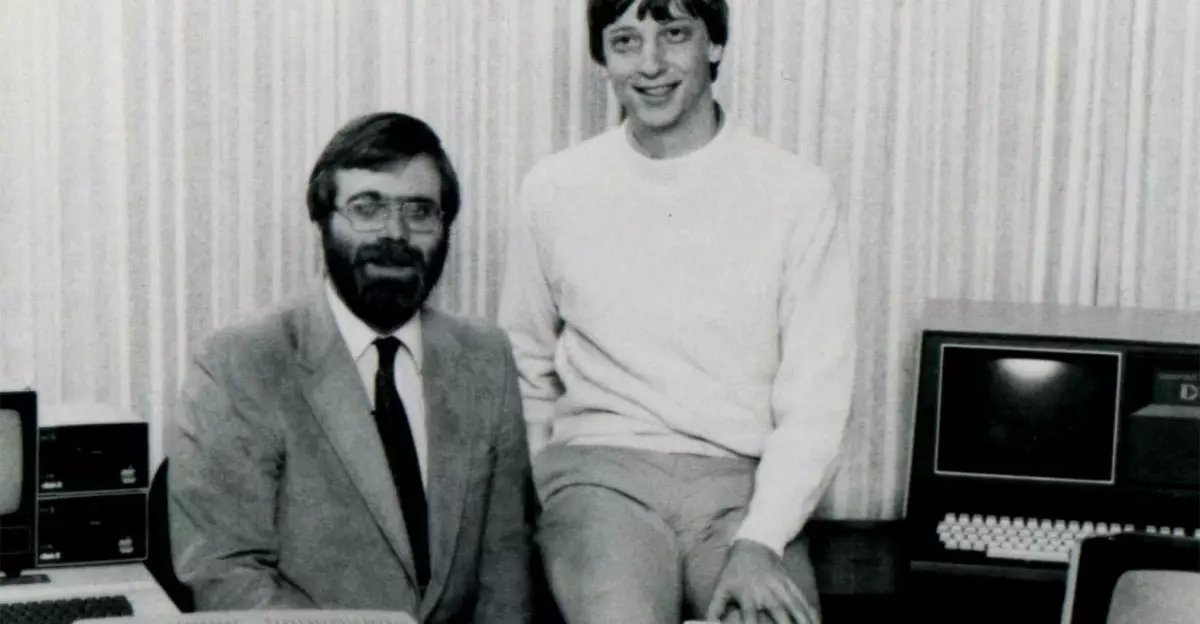Fifty years ago, on April 4th, 1975, two friends, Bill Gates and Paul Allen, set the groundwork for what would evolve into one of the most formidable technology firms in history: Microsoft. Confirmed by its journey from a small startup to a multi-faceted technology juggernaut, Microsoft’s inception aimed to tackle the budding landscape of personal computing. The release of Altair BASIC marked the beginning of a software empire that would eventually touch virtually every corner of modern life. By focusing initially on microprocessors and personal computing software, Microsoft charted an ambitious roadmap that continues to influence technological advancement today.
The partnership between Gates and Allen was more than just a business venture; it was a vision. Their collaborative pursuit not only filled a market gap but also created tools that would revolutionize how people interacted with technology. By providing software for the Altair 8800, a pioneering personal computer, Microsoft laid the initial groundwork for an unprecedented era in which computers would become household staples.
The IBM Pact and the Birth of a Dominant Force
A pivotal moment in Microsoft’s journey came in 1980 when the company landed a significant contract with IBM to develop software for their first personal computer. This collaboration resulted in MS-DOS, an operating system that dominated the market and solidified Microsoft’s place among industry titans. The powerful combination of IBM’s hardware and Microsoft’s software established a foundation that would allow both companies to flourish during the explosive growth of personal computing throughout the 1980s.
However, this was just the beginning. Microsoft quickly recognized the need for user-friendly interfaces, leading to the creation of Windows, announced in 1985. The Windows graphical user interface proved to be a game changer, making computers accessible to the masses. It paved the way for future developments that would eventually culminate in the iconic Windows 95—a release that created historic hype, with consumers lining up for blocks to purchase a copy. Windows 95 wasn’t just an operating system; it was a cultural phenomenon, introducing features that remain staples in modern computing, such as the desktop environment and File Explorer.
The Office Suite and the Era of Productivity
While its operating systems blossomed, Microsoft supplemented its offerings by pivoting towards productivity tools. The launch of Microsoft Office in 1989 marked a significant milestone in this diversification strategy. Initially tailored for Mac users, the Office suite quickly transitioned into a Windows essential and became synonymous with professional productivity. Today, Office is a pillar in both local and cloud computing, adapting with the times and reinforcing Microsoft’s status as an indispensable utility in the workplace.
As the digital landscape shifted, Microsoft exhibited remarkable versatility, evolving through changing tides. With the rise of online collaboration and remote work, Office has expanded beyond traditional boundaries, offering access via web browsers and various platforms. This adaptive foresight cemented Microsoft’s relevance—even as new competitors entered the scene.
Innovating for the Future: Xbox, Cloud Computing, and AI
Microsoft’s ambitions never stopped at software. The launch of the Xbox in 2001 signaled its committed foray into hardware, tapping into the lucrative gaming market. This venture into interactive entertainment demonstrated Microsoft’s willingness to challenge itself beyond traditional software development. The subsequent introduction of Azure in 2008 further diversified its portfolio. Microsoft recognized the growing significance of cloud computing early on and subsequently established itself as a formidable player in that domain.
Today, as Microsoft celebrates its 50th anniversary in Redmond, Washington, the company stands at the precipice of an AI-driven transformation. The introduction of innovative features like Copilot signifies not just a continuation of legacy but an exciting reimagining of Microsoft’s broad ecosystem. By embedding AI into its products—Windows, Office, and Azure—Microsoft positions itself as a trailblazer ready to redefine entire industries.
In this momentous year, it’s clear that Microsoft’s future will be built on the same spirit of innovation that fueled its past. As familiar faces gather to celebrate this milestone, one thing is certain: Microsoft isn’t merely resting on its laurels. Instead, it is poised to lead the charge into a new era where technology becomes even more intertwined with daily life.

